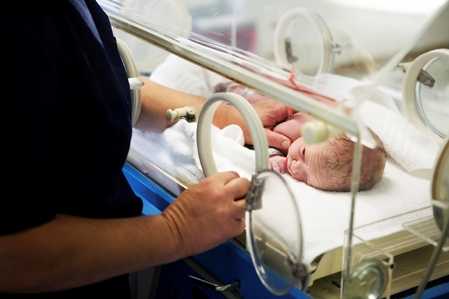ART and Birth Defects
Key Findings: Use of assisted reproductive technology and risk of birth defects
 Use of assisted reproductive technology (ART) in the United States has increased over time. In 2012, about 1.5% of all infants were conceived using ART. Although most pregnancies conceived by ART have healthy outcomes, there have been some reports of increased risk for birth defects in infants conceived with ART. However, many of these studies were small and only a few evaluated different types of ART procedures. To study ART and birth defects in a large population of liveborn infants, CDC used national ART surveillance data linked with information from vital records and birth defects registries for three states (Florida, Massachusetts, and Michigan). These findings provide additional information on the risks of ART that can be used by patients, providers, and researchers.
Use of assisted reproductive technology (ART) in the United States has increased over time. In 2012, about 1.5% of all infants were conceived using ART. Although most pregnancies conceived by ART have healthy outcomes, there have been some reports of increased risk for birth defects in infants conceived with ART. However, many of these studies were small and only a few evaluated different types of ART procedures. To study ART and birth defects in a large population of liveborn infants, CDC used national ART surveillance data linked with information from vital records and birth defects registries for three states (Florida, Massachusetts, and Michigan). These findings provide additional information on the risks of ART that can be used by patients, providers, and researchers.
Does assisted reproductive technology increase the risk for birth defects?
- In our study of more than 4 million infants, we found that singleton infants conceived using ART were 40% more likely to have a nonchromosomal birth defect (such as cleft lip and/or palate or a congenital heart defect) compared with all other singleton births. However, because this study did not account for some factors related to infertility that might explain the observed increases in risk for birth defects, more research is needed to clearly answer this question.
Among ART-conceived infants, does the risk for birth defects differ by type of procedure?
- The prevalence of nonchromosomal birth defects (such as cleft lip and/or palate or congenital heart defects) was slightly increased for women with a diagnosis of ovulation disorder (such as polycystic ovary syndrome) and when assisted hatching was used. However, this association may be connected because of factors that we could not assess—such as embryo quality and undiagnosed diabetes.
More about These Findings
These studies used CDC’s National ART Surveillance System, which collects data on all ART procedures performed in the United States.
More Information about ART and Multiple Births
- Learn more about assisted reproductive technology and CDC’s work on this issue.
- Visit NCHS’ website to learn about the number of multiple births in the United States.
Key Findings References
-
Boulet SL, Kirby RS, Reefhuis J, et al. Assisted reproductive technology and birth defects among liveborn infants in Florida, Massachusetts, and Michigan, 2000-2010. JAMA Pediatr. 2016:170(6):e154934. doi:10.1001/jamapediatrics.2015.4934. Published online April 4, 2016.
- Page last reviewed: April 1, 2016
- Page last updated: April 13, 2016
- Content source:
- Maintained By:


 ShareCompartir
ShareCompartir